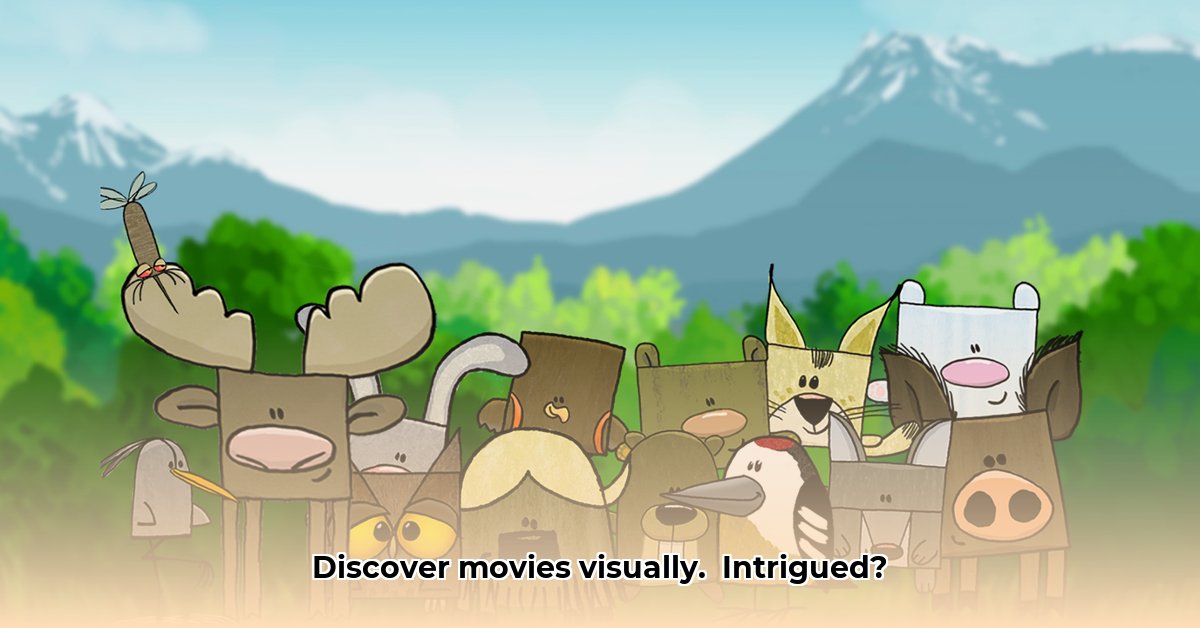
A Visual Revolution in Film Discovery
The way we discover movies online is undergoing a dramatic transformation. Platforms like tinymovies are increasingly prioritizing visual elements—posters, trailers, and stills—over lengthy written reviews. This shift isn't a minor adjustment; it represents a fundamental change in how films are marketed and consumed. This visual dominance impacts everyone from Hollywood studios to independent filmmakers and film enthusiasts. Are you adapting your strategies to this rapidly evolving landscape?
Think about your last movie search. Did you meticulously read reviews, or were you drawn in by a striking image or a dynamic trailer? For most, the answer is the latter. In our fast-paced digital world, immediate impact is critical, and visuals deliver that impact far more effectively than text. This trend isn't limited to tinymovies—major players across the film industry are following suit, adopting visual-first strategies to engage audiences.
This isn't just about aesthetics; it's a reflection of how we consume information. Our attention spans are shorter than ever; we demand immediate gratification. A vibrant poster or a captivating trailer grabs attention instantly, whereas a lengthy review might struggle to retain a user's focus. This has profound implications for how studios, filmmakers, and streaming services approach marketing. Streaming services, in particular, heavily favor visually appealing content in their recommendation algorithms. We are increasingly passively discovering movies through visually engaging thumbnails rather than actively searching for specific titles.
This shift presents both challenges and opportunities. Independent filmmakers, who once relied heavily on critical acclaim, now face a steeper climb. Breaking through the visual clutter requires a new approach to marketing. How can smaller productions compete effectively in this visually-driven space?
For film critics and journalists, adapting to this visual-first environment is crucial. The traditional lengthy review is losing some of its impact; critics must embrace video essays, concise reviews, and active social media engagement to remain relevant. How can the critical voice remain powerful in a visually-saturated market?
How to Effectively Market Films in a Visually Driven Online Landscape
The digital age demands a new approach to film marketing. To thrive in this visually-driven landscape, filmmakers and studios must adopt strategies that prioritize visual storytelling, targeted marketing, and data-driven decision-making.
Visual Storytelling: The New Normal
Forget lengthy descriptions. Short, impactful visuals are now paramount for grabbing attention. Stunning stills, brief, high-impact video clips, and engaging behind-the-scenes content are more effective than ever. Platforms like Instagram, TikTok, and YouTube Shorts have become essential tools for reaching audiences with compelling visual storytelling.
Targeted Campaigns: Reaching the Right Audience
Effective marketing is about precision targeting. Identify your film's core demographic and tailor your visual content to resonate with them. A gritty thriller requires different visuals than a family-friendly comedy. A visually consistent brand identity is key to success.
Harnessing the Power of Influencers
Influencer collaborations are no longer optional; they're fundamental to successful campaigns. Partnering with relevant influencers, whose audiences align with your film's demographic, provides authenticity and expands your reach. Consider micro-influencers for niche audiences and macro-influencers for broader awareness.
Data-Driven Decisions: Measuring Success
Track engagement metrics—likes, shares, comments, website traffic—to understand what's working and what isn't. A/B testing different visual assets allows for data-informed adjustments to your strategy.
User-Generated Content: Amplifying Reach
Encourage user-generated content by launching contests or challenges to build a community around your film. This expands your reach organically by creating audience engagement.
Adapting to the Ever-Changing Online World
Social media algorithms are continuously evolving. Stay ahead of the curve by experimenting with different posting times, hashtags, and content formats. Constant adaptation is crucial for staying visible.
Integrating Online and Offline Strategies
Don't dismiss traditional methods. Well-crafted press releases, combined with striking visuals, can generate significant media attention. Integrate online strategies with offline events like local screenings and community engagements.
Key Takeaways:
- Visuals are key: Short, impactful videos and arresting images are essential.
- Target your audience: Tailor your visuals to resonate with your specific demographic.
- Leverage influencer marketing: Partner with relevant personalities for increased reach.
- Data informs success: Track metrics and adapt your strategy accordingly.
- Encourage user-generated content: Empower your audience to become brand advocates.
- Stay adaptable: Continuously monitor and adapt to algorithm changes.
- Integrate online and offline strategies: Blend digital and traditional methods for maximum impact.